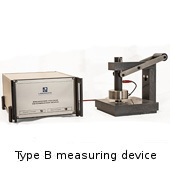|
|
Unsatisfactory FIBC standards
| Three years ago the European standard EN 1898 was introduced for non-dangerous-goods FIBCs. Since then all European national standards have become invalid (eg BS 6383 and others). The EN standard will be taken over verbatim as ISO 21898 probably this year by the International Organisation for Standardisation. When this takes place probably most of the non-European standardisation organisations will adopt these regulations. Maybe the Japanese will keep their exotic standard JIS Z 1651 for use in their local market. However, the widely accepted EFIBCA Standards will continue to remain valid, because they constitute house standards of a manufacturing association (European Flexible Intermediate Bulk Container Association). So there will remain just two standards worldwide: EN/ISO and EFIBCA. This is very much to be welcomed. However, unfortunately both these standards contain some faults and shortcomings. EFIBCA is meanwhile discussing plans to rework its standards which have served the industry well for the past 20 years. It is to be feared, however, that the full advantage of this opportunity will not be taken to remove all weak points. Instead it is to be expected that EFIBCA will align itself closer with the EN/ISO standard (because of lower testing fees). Thus EFIBCA would no longer be in a position to claim that its standards required its members to produce FIBCs of higher quality. Should EFIBCA move away from its present position, its standards would soon loose their authority because it makes little sense to have two standards which are scarcely distinguishable from each other. For the FIBC industry a historic epoch would come to an end. Maybe the LABORDATA house standard LDS 1005 would then take over this task. It is appropriate here to enumerate the weak points in the hope that EFIBCA will consider once again becoming the trail-blazer for the FIBC industry. In both standards the following two items need urgently to be changed. Others will be discussed in my next comments. 1. STACKING/COMPRESSION TEST Both standards demand compression tests in which a test load of 4 x SWL is applied. |
However, a serious difference lies in the duration of testing: EFIBCA: Duration of test 30 seconds. In terms of testing procedure this is nonsense. EN/ISO: Duration of test 6 hours. This is acceptable. However, an assessment of the test result with regard to the permissible stacking height is not provided in either standard. Both standards provide no clarification with regard to this question, although it is one which is raised in practice daily. EFIBCA says nothing on the subject. EN/ISO sidesteps the issue with the following unhelpful statement: "The compression load of 4 x SWL shall not be taken as the allowable stacking load in service. Other factors which affect stacking are the actual contents used in service, FIBC dimensions and design, stacking method, etc." This statement is a very simple excuse. Of course it applies to the Top Lift Test as well and it could have been quoted in that context too. But here the problem is solved by introducing the safety factors 5:1, 6:1 and 8:1. It should be carried out in the same way with regard to the compression test. LABORDATA has closed this gap with its house standard LDS 1005 as follows: a) The compression load is not fixed rigidly at 4 x SWL. It is determined by the requirements of the customer, i.e. the compression load is flexibly orientated to the stacking height wanted. b) Duration of loading: 6 hours. c) A safety factor SF = 2 is introduced. Thus a permissible stacking height can be indicated. The safety factor indicates that the permissible stacking height amounts to half the compression load tested. 2. DROP TEST |
I recommend that this test should be introduced in a modified form again for non-dangerous-goods FIBCs. It is an important proof of quality and should be adopted as such by those associations and manufacturers which wish to promote their products as being of special quality. But unfortunately the implementation of drop tests is very time-consuming if performed according to the former national standards. Nearly for every test an additional filling material has to be mixed in order to reach the required density (= SWL divided by FIBC volume). This procedure still is necessary for UN bags. The results of drop tests depend crucially on the applied filling material. Because the kind of filling material is not specified for the drop test, however, the filling materials applied in test practice are very different. Consequently the test results often are not comparable and not reproducible. Therefore a procedure must be applied which is cheaper (not time-consuming) and which leads to reproducible results. This can only be achieved if a standardised filling material is used. It is reasonable to use the same category of granules for the Drop Test as are defined for the Top Lift Test and to introduce a factor which takes into account the above explained problem arising from the required density. I recommend that the drop test should be introduced into future standards in accordance with the well proven LABORDATA house standard LDS 1005. Using the procedure described therein, the drop height is calculated by means of the following formula: Drop height: h = f x SWL / L
I shall continue discussing other aspects of the FIBC standards in my next Comments. |
Comments are welcome and these may be sent by letter to Dr Kielbassa, c/o INDUSTRIAL BULK WORLD, 25 West Cottages, Off West End Lane, London NW6 1RJ, UK. Alternatively, he can be contacted direct (tel: +49 531 33 9011, fax: +49 531 33 9013; email: This email address is being protected from spambots. You need JavaScript enabled to view it.).










